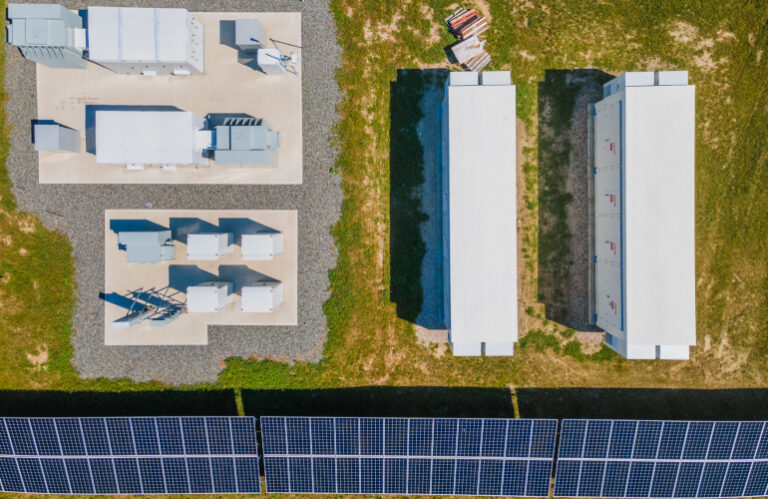This summer, Rhode Island joined its New England neighbors in passing legislation specifically aimed at developing energy storage. The state has an aggressive clean energy goal of 100% renewable electricity by 2033, and the Energy Storage Systems Act will contribute to that effort.
With most parts of the country still working toward positive solar legislation, energy storage efforts in New England seem almost futuristic. Rhode Island’s latest legislation establishes storage programs, deployment targets, utility procurement and rules for connecting batteries to the electric grid. World of solar energy spoke with Kat Burnham, senior director at the National Business Association Advanced energy unitedon how energy storage efforts have evolved recently.
SPW: What is Advanced Energy United and what advocacy efforts are you working on, especially in New England?
Burnham: Advanced Energy United is a national trade association of clean energy companies united in our mission to achieve 100% clean energy. What sets us apart is that we are not one sector; we represent technologies in the fields of batteries, wind energy, solar energy and network improvement. Although we are national, we have state representatives across the country. I am the state leader for Rhode Island, as well as Massachusetts and Connecticut.
There is a lot happening in New England, and we as an organization are relatively new to this area. I worked in Rhode Island advocacy for a few years, and our New England team has a track record of work in this area. Us [energy] work in New England includes legislative issues such as Rhode Island’s energy storage law. We also do some regulatory work at Public Utilities Commissions, and our team works with ISO New England advocating for reform at the wholesale level. We really cover our bases. We even have a federal team monitoring how DOE federal dollars are investing in the New England states and how they can be deployed toward our shared energy goals.

A solar and storage project completed by Nexamp in Massachusetts.
What were your goals with the Energy Storage Systems Act in Rhode Island?
Our goal was to have legislation that would allow storage in Rhode Island. Simply put, right now the market is not well designed to drive storage development. It was designed at a time when we had large, centralized energy sources and storage was truly unique. Our goal was for that legislation to encourage investment in storage solutions in Rhode Island and take a forward-looking approach, including implementation goals for Rhode Island to provide some predictability to the market and help grow interest in the state.
Looking around Rhode Island, we see that our neighbors Connecticut, Massachusetts and Maine all have achievable storage goals. To keep pace, we definitely want to have our own implementation goals. It certainly helps if other states take the first step, and we can learn best practices or lessons from those states, which is reassuring for policymakers. Just as solar energy has evolved, storage has finally reached its peak. We see both the cost savings and the opportunities with storage in a way that we didn’t in previous years. This has helped build the case for storage and turned it into a positive success story.
Rhode Island already had an aggressive clean energy law, so was this more of a clarification for energy storage?
Yes, and this legislation doesn’t just empower battery developers. We have seen that it has been proven [storage] can be a very important tool for integrating other distributed energy sources, such as wind, solar and EV chargers. It can be a useful tool to balance the system. I come back to the way things are structured in Rhode Island, but also in other states, which are not really good at accommodating storage, which is not in a neat box of just a producer or just a consumer – storage is something else. That’s why we needed this legislation.
When you talk to legislators and committees, what is the selling point for energy storage?
There is no one selling point for storage. It’s a set of benefits that makes it really attractive to policymakers. Workforce development is part of the picture. Reliability is important. The resilience of the electricity grid, the ability to integrate other resources, is important. Another key benefit that storage brings that has resonated in Rhode Island is the potential savings for taxpayers, as storage can be charged when there is sufficient power and discharged when demand is higher. That can help balance the system and help save taxpayers. In New England, we have relatively high electricity rates, so any opportunity to invest in a system that makes it more reliable and helps smooth out costs and make it more cost-effective for consumers – that really appeals to policymakers.
It takes a lot of time to train legislators and policymakers. We were really fortunate with this legislative push to have incredible sponsors of the bill – Senator Dawn Euer and Representative Arthur Handy. It takes a lot of time, expertise and dedication, and they have that in abundance. That is important when we think about the transition and all possible solutions. That also means making sure that all policymakers are aware of these technologies and the potential hurdles we need to overcome, and that we have a legislative body that understands this.
What’s next for energy storage advocacy in Rhode Island?
The next step is implementation. The Energy Storage Systems Act goes to the PUC and the Rhode Island Infrastructure Bank has been tasked as program manager. On behalf of the industry, we want to raise our hand to be a resource and help guide that process as the PUC thinks about developing rates specific to storage, recognizing all the different features it can provide, and ensuring that this is clear and effective for stakeholders. That’s my biggest next step for Rhode Island: implementing the bill.


